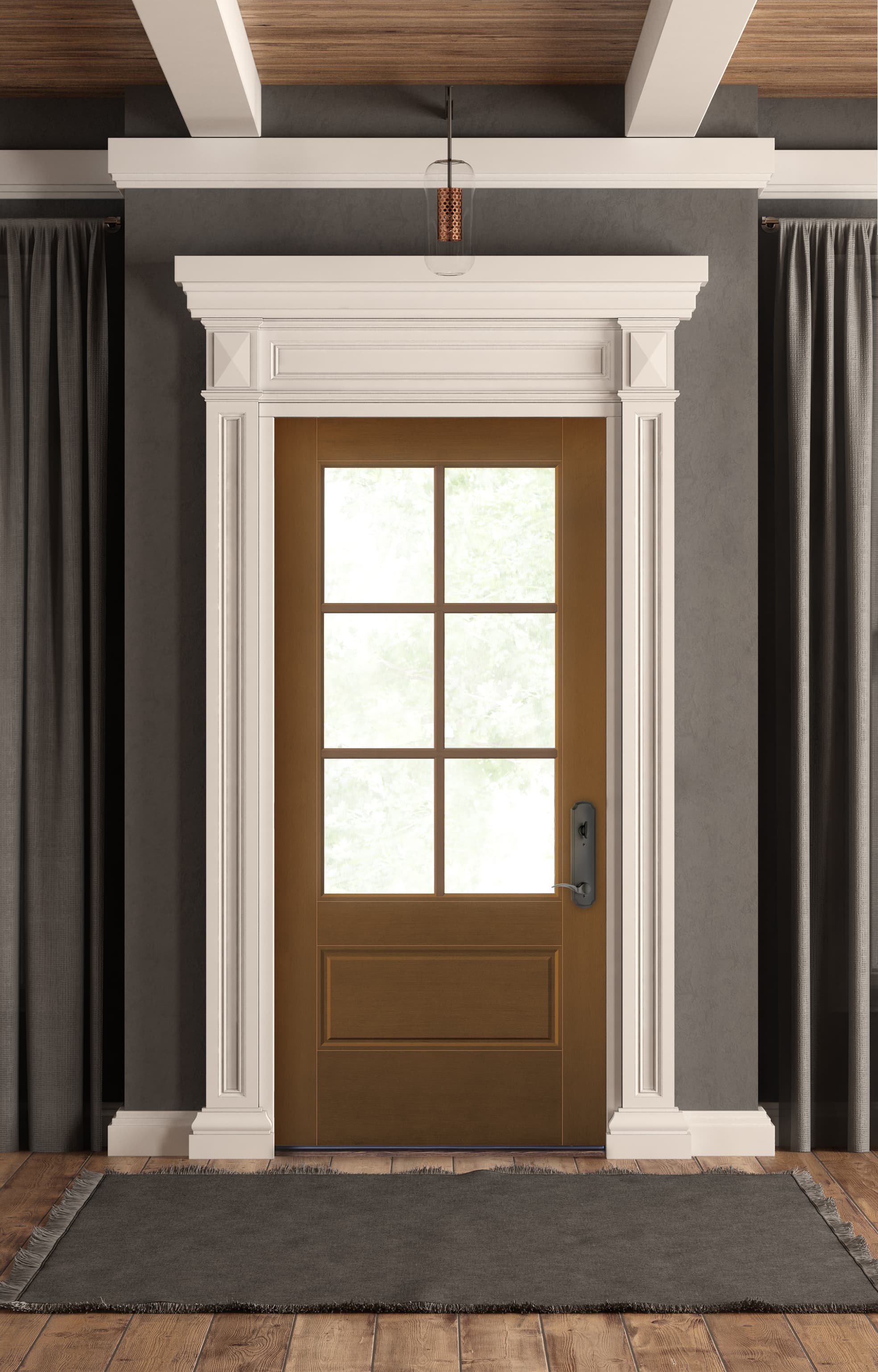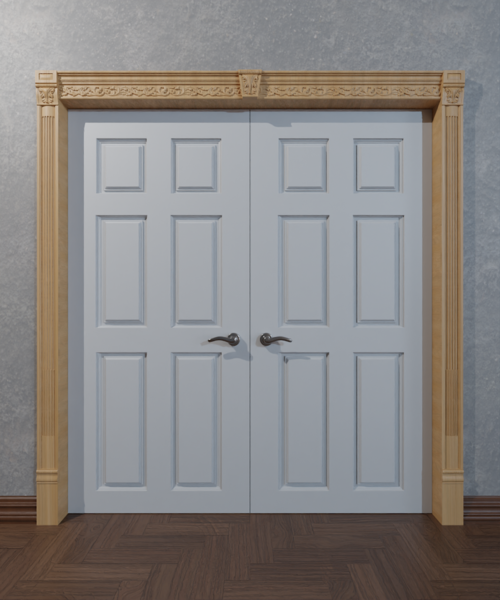Decorative door frame molding is a simple yet effective way to elevate the aesthetic appeal of your home. Whether you’re renovating a single room or your entire house, the right molding can make all the difference. In this comprehensive guide, we’ll explore various types of door frame molding, installation tips, design ideas, and how to choose the perfect style for your home.
What is Decorative Door Frame Molding?
Decorative door frame molding, also known as trim or casing, refers to the decorative elements surrounding a door frame. They serve both functional and aesthetic purposes:
- Functionality: Molding helps cover gaps between the wall and the door frame, providing a polished look.
- Aesthetics: It enhances the overall design of your room, adding character and style.
Types of Decorative Door Frame Molding
When it comes to door frame molding, there are several styles to choose from. Here are some popular types:
Crown Molding
Crown molding rests at the intersection of walls and ceilings. While it’s primarily used in ceilings, it can also be adapted for door frames.
Casings
Door casings are the most common type of molding. They come in various styles, from simple and modern to intricate and traditional.
Backband Molding
This molding adds depth to the door frame and accentuates the overall design. It’s often used in combination with other types of molding.

Panel Molding
Panel molding is typically used on doors themselves, adding visual interest and making flat surfaces appear more dynamic.
Comparison of Decorative Molding Styles
| Style | Best For | Installation Difficulty | Cost |
|---|---|---|---|
| Crown Molding | High ceilings, elegance | Moderate to High | $$$ |
| Casings | All door types | Easy to Moderate | $$ |
| Backband Molding | Traditional styles | Moderate | $$ |
| Panel Molding | Decorative doors | Moderate | $$$ |

Choosing the Right Molding for Your Home
Selecting the right decorative door frame molding is essential for achieving a cohesive look. Here are a few considerations:
1. Style of Your Home
The architectural style of your home greatly influences your choice. For instance, a traditional home may benefit from ornate moldings, while a modern home might look better with clean, simple lines.
2. Room Size
Larger rooms can handle bolder, more intricate moldings, while smaller rooms may require more subtle options. Personal experience taught me that too much detail can make a small space feel cramped.

3. Color and Material
Choose materials and colors that complement your existing decor. Wood moldings can add warmth, while painted moldings can create a modern feel.
Materials Used in Decorative Molding
Common materials for door frame molding include:
- Wood: Classic and versatile, available in various finishes.
- Medium Density Fiberboard (MDF): Cost-effective, smooth surface for painting.
- Polyurethane: Lightweight, resistant to moisture, perfect for humid environments.

Installation Tips for Decorative Door Frame Molding
Installing decorative door frame molding may seem daunting, but with the right tools and guidance, it can be a rewarding DIY project. Here’s how to do it effectively:
Tools and Materials Needed
- Miter saw
- Nail gun or hammer
- Wood glue
- Measuring tape
- Level
- Caulk and caulking gun
- Paint or stain (if applicable)

Step-by-Step Installation Guide
- Measure: Accurately measure the height and width of your door frame.
- Cut: Cut your molding pieces at a 45-degree angle for corners.
- Attach: Use wood glue and the nail gun to attach the molding to the wall.
- Fill Gaps: Use caulk to fill any gaps or seams.
- Finish: Paint or stain your molding as desired.
Pros and Cons of Decorative Door Frame Molding
Pros
- Adds visual appeal and character to any room.
- Can increase property value.
- Covers imperfections in wall finishes.
- Available in various styles and materials.

Cons
- Installation can be labor-intensive.
- May require regular maintenance, especially wood.
- Cost can add up based on material choices and intricacy.
Creative Design Ideas with Decorative Door Frame Molding
Emphasizing creativity, here are some design ideas to inspire your door frame molding project:
1. Contrast Colors
Consider painting your molding in a contrasting color to make it pop against your walls.
2. Layered Molding
For a more dramatic effect, layer different types of moldings for depth and interest.
3. Go Vintage
Incorporate antique moldings for a classic look that stands out.
Real-World Application
In my own home, I decided to add crown molding to my living room. The transformation was phenomenal! It not only provided a finished look but also opened up the space, making it feel larger and more welcoming. The secret was to paint the molding white against light-colored walls – a simple tweak that made a significant impact.
Frequently Asked Questions (FAQs)
What is the average cost of decorative door frame molding?
The cost can vary widely depending on materials and complexity but generally ranges from $1 to $8 per linear foot.
Can I install decorative door frame molding myself?
Yes! With the right tools and some patience, many homeowners can successfully install molding themselves.
Is decorative door frame molding still in style?
Absolutely! Decorative moldings are timeless and can be adapted to fit modern or traditional designs.
How do I maintain my decorative molding?
Dust regularly and touch up paint or stain as needed to keep your molding looking fresh.
Conclusion
Decorative door frame molding is a fantastic way to enhance your home’s beauty and overall atmosphere. With various styles, materials, and design options available, the possibilities are almost endless. Whether you choose to install them yourself or hire a professional, the investment will surely yield aesthetic and functional benefits. So, grab your tools or contact your local carpenter today and start transforming your space!